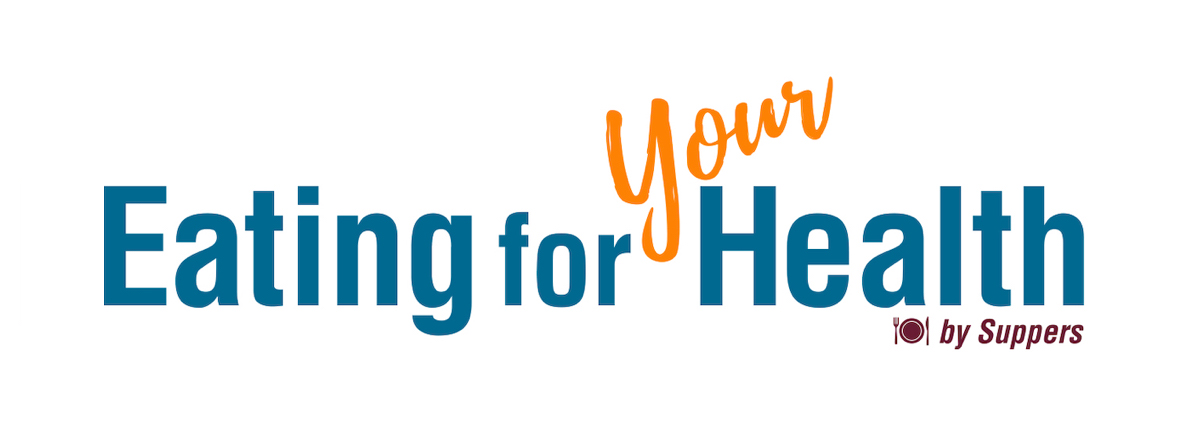As an Indian American, I came to the United States over 34 years ago as a graduate student and later settled down as a financial services executive. I semi-retired in 2013 hoping to do all the things I couldn’t do before –exercise regularly, eat better, meditate and be an engaged parent. For the most part, I was doing all of these things, but years of careless eating habits (carb rich and processed foods) reared their ugly head. Despite all my resistance, I had to learn to accept my fate and make conscious changes to control what I possibly could.
When I first learned about Suppers four years ago, I didn't have any health problems. The concept intrigued me as did the opportunity to cook healthy meals. I also enjoyed the communal dining aspect and focus on intentional/mindful eating, so I periodically attended Suppers meetings.
Eight months ago when my blood sugar levels increased dramatically due to significant stress caused by unforeseen circumstances, I attended several workshops hosted by Suppers on this topic. At one of these meetings, Dor casually mentioned that Suppers was hosting a “Whole 30” cleanse, so I came home and researched the concept. It involves eating meat. I wasn't sure I could do this given the fact that I had been eating a vegetarian diet for the past few years. At the same time, I didn't see any other option to reverse diabetes or high blood sugar. I really didn't want to become dependent on medication and insulin.
I grew up in a household that practiced Jainism in India. Jains are forbidden to eat any meat, eggs, poultry and fish, but also root vegetables. The fundamental belief of this religion is rooted in nonviolence and taking extreme measures to not harm any living being (for example, uprooting a plant causes it to die, hence no potatoes, beetroot etc.).
Truth be told, I didn’t miss anything as there were plenty of available choices – legumes, ancient grains (red millet, amaranth, pearl millet, barley, oats to supplement wheat and rice), along with spices, seeds and nuts as well as fruits and vegetables.
All the grains were ground at the local mill. My mother preserved and cured vegetables, ground her own spices, made yogurt with active cultures along with cold pressed juice. Fresh fruits and vegetables were purchased almost every day from a handcart. Fresh full fat milk was delivered to the house every morning. There was no microwave, and eating leftovers was not an acceptable practice. In general, almost everyone I knew lived like this.
As an adventurous person, I started eating meat when I came to the United States. It was convenient and often times the only available option, so I ate essentially “anything that wouldn’t bite me back”.
About four years ago, I gave up eating meat as I used to feel uncomfortable and nauseous. Every time I cooked meat or poultry, I felt repulsed and didn't feel like eating the food I had prepared. When I ate in restaurants, I was concerned about the quality of meat (mostly non-organic) as it also made me feel nauseous.
So with Whole 30 my options were really limited. I wanted to start the program but knew that I would not be able to practice it right away. I needed to slowly introduce meat back into my diet.
I started slowly with one meal a day that incorporated meat. I only bought high quality grass fed and antibiotic free poultry, eggs and meat, as well as wild caught fish.
Like the Suppers program, I made cooking and eating an intentional and mindful process. I also selected simple recipes that would be easy to prepare and make ahead of time so that it wouldn’t interfere with work.
When the pressure was off, I found that my body wasn't rejecting the food. So I started the Whole 30 program on my own. My diet is low carb, < 20 grams per day, and comprises of meat and vegetables along with nuts, cheese and almond milk. I ate an apple occasionally, if I felt lightheaded as I still took medication.
Within a week, my blood sugar levels were below 100 - every time I tested - fasting, after lunch and dinner. My energy levels had increased and my mind felt sharper. My mood swings disappeared and better yet I didn't feel hungry or the need to snack all the time.
During the first week I worked out twice a day and felt even better. I continue to work out for 45-60 minutes every day - mostly moderate activity – walk, use the treadmill or elliptical along with lifting weights and using strength training equipment.
My fear of insulin shots and medication were greater than that of eating meat again.
I also thought that I may not be able to follow the Whole 30 diet because I had to take medications, so during the first week, I was particularly attentive to any symptoms that I might experience – light headedness, dizziness etc.
After the first two days of light headaches, I actually started feeling much better - higher energy, clearer focus, sharper thinking and fewer mood swings. I didn’t really miss carbs as much as I thought I would.
The second week was harder – I started getting chills, so I increased my intake of calories – still following the Whole 30 program. On some days to compensate I ate 30 carbs instead of the required 20. While some of my resistance to meat was “mental,” it was also “physical” in that I needed to eat organic and antibiotic free items as much as possible. I have not felt nauseous either with my home cooked meals. Whole 30 is forcing me to look at food very differently. It’s almost as if I am going back in time to my childhood with the emphasis on fresh food! As an added bonus, I have also lost weight.
